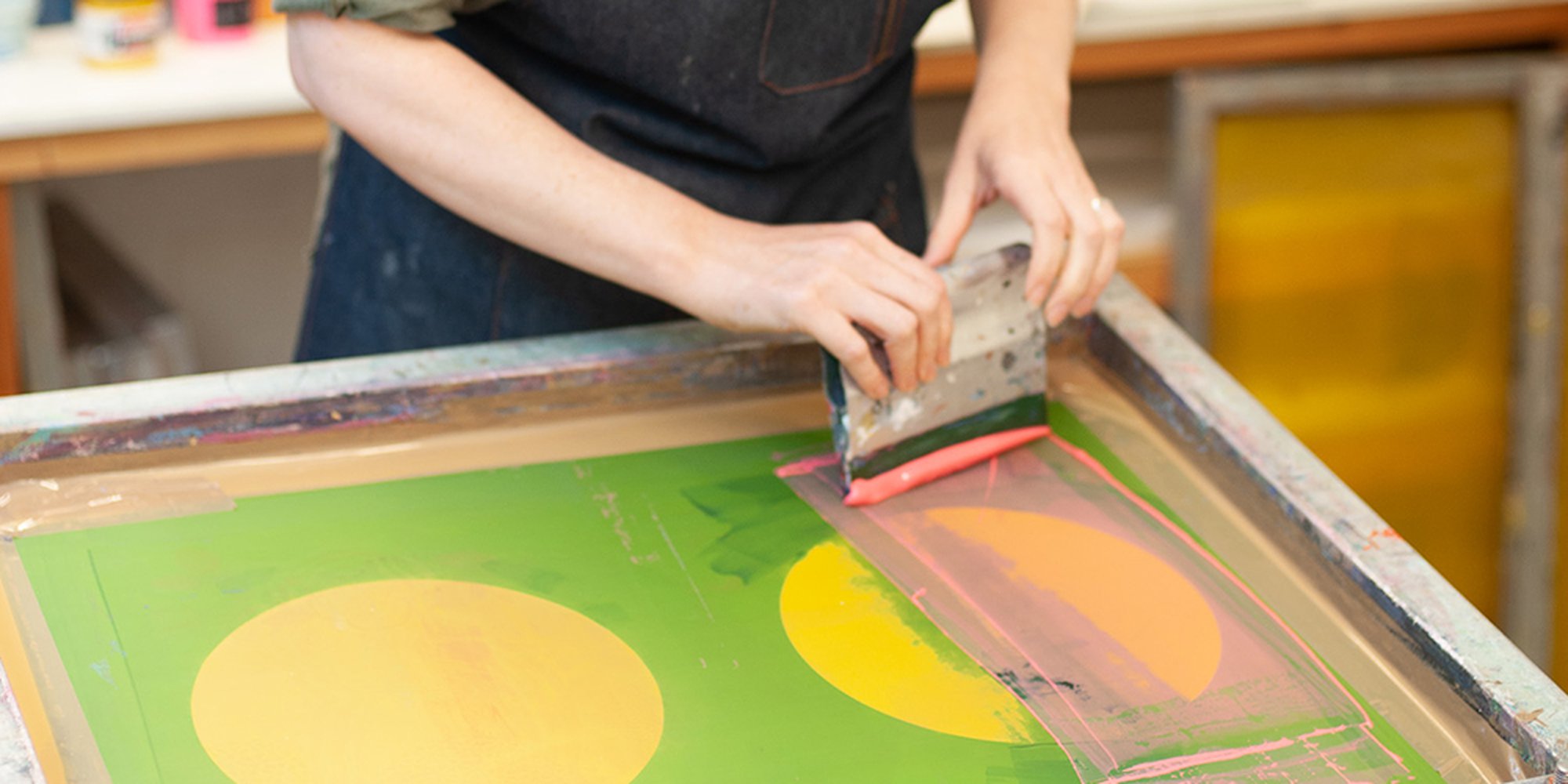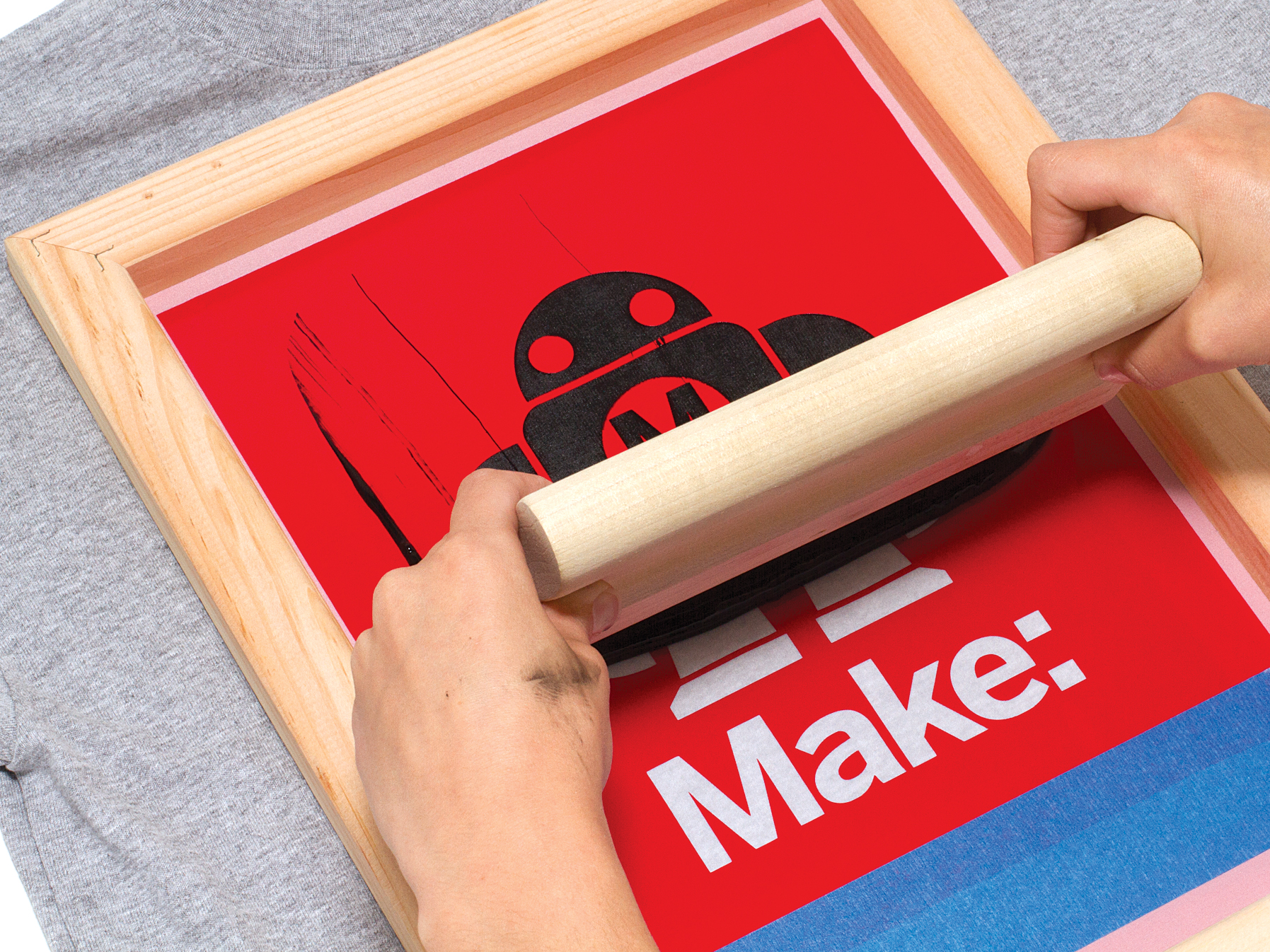Screen Printing design inspiration: what’s hot in 2025
From Design to Distribution: Mastering the Art of T-Shirt Screen Printing
The journey from layout to distribution in t-shirt screen printing incorporates a collection of critical points that require focus to information and strategic planning. It begins with comprehending the subtleties of your target market, adhered to by the option of appropriate materials and the preparation of artwork that satisfies high requirements. As the process unfolds, challenges in quality control and logistics can occur, potentially affecting the final result. Checking out these intricacies discloses not just the intricacies of screen printing however likewise the necessary techniques that can raise a brand name's standing in an open market.
Comprehending T-Shirt Screen Printing
Comprehending T-Shirt screen printing involves recognizing a versatile and extensively utilized method for moving layouts onto material. This method utilizes a mesh and a pattern screen to use ink onto different textile materials, mostly cotton and polyester blends. The procedure begins with the creation of a display that includes the preferred style, which is then thoroughly aligned on the material.
Ink is pushed via the screen's open locations using a squeegee, permitting specific application of color. This method is preferred for its capability to produce vivid, resilient prints that hold up well to cleaning and use. Additionally, screen printing can suiting both intricate and basic designs, making it a recommended choice for custom garments, promotional items, and even imaginative works.
Screen printing provides scalability, making it ideal for both little set orders and large-scale manufacturings. While initial configuration costs may be greater compared to other printing approaches, the efficiency and durability of screen printing commonly justify the financial investment. Overall, comprehending the principles of T-shirt screen printing is vital for any person looking to take part in this prominent kind of fabric design, whether for individual tasks or commercial ventures.
Conceptualizing Your Style
Conceiving your layout is a vital step in the T-shirt screen printing process, as it sets the structure for the entire project (T-Shirt Printing). This stage entails generating ideas that resonate with your target audience while guaranteeing that the style lines up with the brand name's identification and message. It is important to begin by checking out styles, color plans, and graphics that mirror the intended aesthetic
Laying out preliminary concepts can be valuable, allowing for a graph of ideas before finalizing the layout. Think about making use of typography, images, and design in a method that records attention and interacts successfully. Furthermore, it is vital to prepare for the printing technique that will be employed, as this can affect layout complexity and color choices.
Engaging in conceptualizing sessions with staff member or looking for responses from prospective clients can also enhance the concept procedure, offering diverse perspectives that improve the layout. Inevitably, a well-balanced design not just boosts the visual appeal of the Tees however likewise promotes a connection with the target market, driving passion and prospective sales. Devoting time to conceptualize your style can lead to an effective screen printing end result.
Picking the Right Products

The weight of the textile, commonly gauged in grams per square meter (GSM), affects the drape and general feel of the Tees. Larger materials may provide an extra exceptional appearance, while lighter options are comfy for casual wear. Appearance additionally contributes; smoother textiles have a tendency to generate sharper prints, while textured surface areas can produce distinct aesthetic impacts.
Additionally, take into consideration the environmental influence of materials. Organic cotton and recycled polyester are obtaining popularity amongst eco-conscious consumers. Ultimately, selecting the appropriate materials involves stabilizing visual appeal, capability, and sustainability, guaranteeing that the T-shirt not just looks excellent but additionally satisfies the expectations of your target market.
Preparing Artwork for Printing
Preparing art work for T-shirt screen printing requires mindful interest to information to guarantee that the last print precisely mirrors the designated layout. The very first action is to create a high-resolution electronic file, ideally in vector layout, as this enables scalability without loss of quality. Usual software utilized for this objective includes Adobe Illustrator and CorelDRAW.
Next off, confirm that all text is transformed to describes or rasterized to stay clear of font issues during printing (Abilene T-Shirt Screen Printing Company). Additionally, it is vital to confirm that the color mode is established to CMYK, as this lines up with the printing procedure. Pay close interest to shade matching; using Pantone colors can aid achieve consistency throughout different prints
Take into consideration the dimensions of the print location and keep appropriate margins to stay clear of design cutoff. It's likewise sensible to include enrollment marks for placement during the printing procedure. T-Shirt Printing. Ultimately, request a proof from the printer to envision the final item prior to automation. This step is essential for determining any kind of potential problems, ensuring that the published T-shirt satisfies the wanted high quality and design specs. Proper preparation of art work substantially influences the general success of the screen printing project
Grasping the Printing Process
Understanding the printing a knockout post procedure is essential for accomplishing high-grade lead to Tee shirts screen printing. This stage includes a number of significant steps that straight affect the last product. The initial step is setting up the printing press properly. Correct enrollment of displays assurances that colors align appropriately, protecting against misprints and ensuring an expert appearance.
Next, picking the appropriate ink is essential. Different ink types, such as plastisol or water-based, deal numerous surfaces and sturdiness. Comprehending the fabric make-up of the Tee shirts also aids in selecting compatible inks.
Controlling the squeegee stress and angle is important when it comes to the actual printing. Regular pressure will certainly produce also ink circulation, while the angle affects the circulation and coverage. In addition, changing the rate of the printing press can influence the ink's treating procedure, which is essential for assuring sturdiness.
Quality Control and Finishing
After the printing procedure is complete, carrying out effective high quality control measures comes to be vital to confirm that each T-shirt satisfies the wanted requirements. Quality assurance involves an organized approach to evaluating each garment for defects, verifying that the print quality, shade accuracy, and material honesty line up with the requirements established throughout the design phase.

The primary step in quality assurance is a detailed aesthetic inspection. This entails checking for typical problems such as imbalance, ink spots, or fading. Any kind of Tees that does not meet the quality criteria must be resolved promptly, either through reprinting or repair.
Along with aesthetic checks, it is important to perform clean tests on a sample of printed t shirts to examine the toughness of the inks and the total long life of the layout. These examinations assist verify that the print will certainly keep its vibrancy and honesty after numerous laundries, a crucial variable for consumer contentment.
Ending up touches, such as thread trimming and the application of care tags, likewise play a considerable role in quality control - Business Branding Services. By concentrating on these elements, companies can enhance the total discussion of their products, inevitably causing a much more satisfying consumer experience
Product Packaging and Shipment Solutions

To accomplish excellent product packaging, take into consideration using environment-friendly materials that align with sustainability trends, such as recyclable poly bags or biodegradable boxes. Each T-shirt need to be neatly folded and placed in protective wrapping to stop creasing and possible damages throughout transportation. Consisting of a well-known insert or care directions can additionally individualize the experience, fostering consumer commitment.
When it comes to delivery, picking a dependable shipping partner is important. Review options based on rate, price, and monitoring abilities. Providing multiple delivery techniques can deal with various client needs, from basic to expedited delivery.
Often Asked Concerns
What Are the Usual Errors Novices Make in Screen Printing?
Common blunders novices make in screen printing include inappropriate screen preparation, poor ink blending, incorrect direct exposure times, inadequate healing, and disregarding to evaluate prints. These errors can lead to low quality and disappointing lead to end products.
Just How Can I Avoid Ink From Blood Loss During Printing?
To stop ink bleeding throughout printing, guarantee correct screen tension, usage appropriate solution density, choose the appropriate ink consistency, keep perfect healing temperatures, and prevent overloading the screen with extreme ink throughout application.
What Sorts of Inks Are Finest for Various Fabrics?
Selecting inks based upon textile type is crucial. Water-based inks are perfect for cotton, giving softness. Plastisol inks fit artificial fabrics, providing durability. Discharge inks properly blend with natural fibers, making certain lively shades without compromising material honesty.
How Do I Select the Right Screen Mesh Matter?
Choosing the best screen mesh matter relies on the wanted print detail and ink type. Abilene T-Shirt Printing Solutions. Higher mesh matters yield finer information, while reduced counts help with thicker inks. Analyze fabric kind and layout complexity for optimal outcomes
Can I Use Screen Printing for Little Set Orders?
Yes, screen printing can be effectively utilized for little set orders. This approach permits in-depth layouts and high-quality results, making it a practical choice for personalized garments, promotional things, or limited edition runs.
Understanding T-Shirt screen printing involves acknowledging a flexible and commonly utilized technique for moving styles onto material. While preliminary configuration expenses may be higher compared to other printing techniques, the effectiveness and toughness of screen printing usually warrant the financial investment. Preparing art work for Tee shirts screen printing needs cautious interest to detail to ensure that the final print accurately reflects the intended layout. Understanding the printing procedure is necessary for attaining high-grade outcomes in Tee shirts screen printing. Typical mistakes newbies make in screen printing consist of inappropriate screen prep work, insufficient ink mixing, wrong direct exposure times, inadequate curing, and neglecting to examine prints.